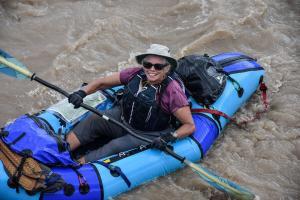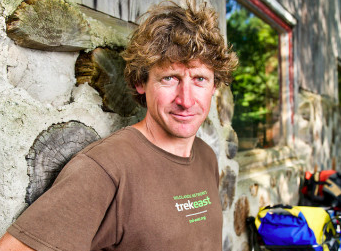The Rewilding Institute Receives Grant for Mapping the Heartland

As we move through late winter 2021, perhaps shoveling out and taking Covid precautions, we nevertheless are hopeful as the Biden administration reverses some of the damage done by the previous one. We are pleased they are supportive of the 30×30 campaign, and we are working to help define how the goal of protecting at least 30% of Earth’s lands and waters by 2030 (and at least half by 2050) may be achieved on the ground.
We continue to work on our Healing Nature’s Wounds campaign under the leadership of Dave Parsons. Many of the items on our list of 25 measures can be addressed by executive action, and we are pressing the new administration for such action. Others, like removal of the Gray Wolf from the Endangered Species list, require renewal of a long administrative process, but we are committed to restoring protections for wolves.
Entering a new project area, we are expanding our services into the Great Plains and larger Mississippi River Watershed, through a program we are calling “Rewilding the Heartland.” As many of you know, proponents of rewilding have so far focused mostly on rugged and wilder parts of the continent where protecting wild nature is relatively easy. The Heartland, the Mississippi Watershed including the Missouri and Ohio Rivers, has not received from continental rewilding proponents the attention that it deserves, and we are starting work on this vast watershed between the Rockies and the Appalachians. Much good conservation work has already happened here; but much more work is needed to reconnect and restore wildlands, waterways, and wildlife across the prairies and woodlands — which have suffered grave losses of biodiversity and ecological integrity as they’ve been converted to croplands.
For our Heartland rewilding work, TRI has proposed and received a grant through BeWildReWild (bewildrewild.org) to join them as a partner in promoting a Great Plains Wildway, to connect riverine and terrestrial wildways and avian flyways in this grassy region. BeWildRewild has already mapped much of Iowa’s potential for wildlife connectivity in areas that are mostly privately owned and devoted largely to agriculture. Our work will go well beyond Iowa to map wooded riparian corridors, avian flyways, staging areas, and stopover points for migratory species. We will map existing protected areas and other potential core reserves, particularly the Loess Hills, Ozarks, Driftless Plateau, Sand Hills, Badlands, Black Hills, sparsely populated parts of the Shortgrass Prairie, and riverine lowlands that may become uninhabitable with climate chaos. Public lands will be mapped, along with respectfully identifying Native American and private lands of outstanding conservation importance where outreach to interested landowners can result in gains for wildlife. We enter this work humbly, offering our rewilding expertise to groups and individuals who have been doing vital land-saving work throughout the Heartland for decades.
Much of the information we need to do the wildways mapping is available; and conservation mapper and GIS expert Kurt Menke will be generating the TRI maps, in collaboration with BeWildReWild and local groups. A critical part of the project will be to provide contact information with each map layer for leading conservation and restoration groups in this vast area. Maps will of course need ground-truthing, and we look forward to helping with this enjoyable task, guided by long-time local and regional naturalists. We are convinced that working with residents of the “fly-over” states — which we take to mean the states that millions of migratory birds fly over and land in every year — will provide a viable vision for a Great Plains Wildway that will be a huge step toward rewilding North America.
We invite others to join us in this Rewilding the Heartland work. If you know groups and places and projects to recommend, please write us and sign up below.
With you for all our neighbors, including the furred, feathered, and finned,
John Davis
Executive Director; jo**@re*******.org
John Davis is executive director of The Rewilding Institute and editor of Rewilding Earth. For Rewilding, he serves as a wildways scout, editor, interviewer, and writer. He rounds out his living with conservation field work, particularly within New York’s Adirondack Park, where he lives. John serves on boards of RESTORE: The North Woods, Eddy Foundation, Champlain Area Trails, Cougar Rewilding Foundation, and Algonquin to Adirondack Conservation Collaborative.
John served as editor of Wild Earth journal from 1991-96, when he went to work for the Foundation for Deep Ecology, overseeing their Biodiversity and Wildness grants program from 1997-2002. He then joined the Eddy Foundation as a board member and continues to serve as volunteer land steward for that foundation in its work to conserve lands in Split Rock Wildway. This wildlife corridor links New York’s Champlain Valley with the Adirondack High Peaks via the West Champlain Hills. John served as conservation director of the Adirondack Council from 2005 to 2010.
In 2011, John completed TrekEast, a 7600-mile muscle-powered exploration of wilder parts of the eastern United States and southeastern Canada—sponsored by Wildlands Network and following lines suggested in Dave Foreman’s book Rewilding North America—to promote restoration and protection of an Eastern Wildway. In 2012, John wrote a book about that adventure, Big, Wild, and Connected: Scouting an Eastern Wildway from Florida to Quebec, published by Island Press.
In 2013, John trekked from Sonora, Mexico, north along the Spine of the Continent as far as southern British Columbia, Canada, again ground-truthing Rewilding North America and promoting habitat connections, big wild cores, and apex predators—all of which would be well served by fuller protection of the Western Wildway he explored. John continues to work with many conservation groups to protect and reconnect wild habitats regionally and continentally.
John is available to give public talks on rewilding, conservation exploration, and continental wildways, as well as to write and edit on these subjects. He is also available for contract field work, particularly monitoring conservation easements, documenting threats to wildlands, and marking conservation boundaries. He can be reached at john@rewilding.org and hemlockrockconservation@gmail.com (for his land-care work).



I am excited to learn that you are taking a closer look at the Heartland. I have lived in Iowa for most of my life and have considered the North Woods of Minnesota as “my wilderness.” And of course that means the beginning of the Mississippi River in Itasca Park. I no longer go up there every year since retiring from college teaching, much less living there as I once did. Since that time, there have been gains in the Wolf population, for one thing. I do not know the latest on logging restrictions but people up there value their forests as contributors to clean air and have had restrictions on fishing the 10,000 lakes and prize the clean water. But time and man never stand still and as in Iowa, the family farm is now pretty much extinct. I look forward to what you find.
I too am glad to learn you are looking at the Heartland. I lived in Mississippi for 15 years. Wrote a hiking guide to the state. It is teeming with life, but there is relatively little public land.